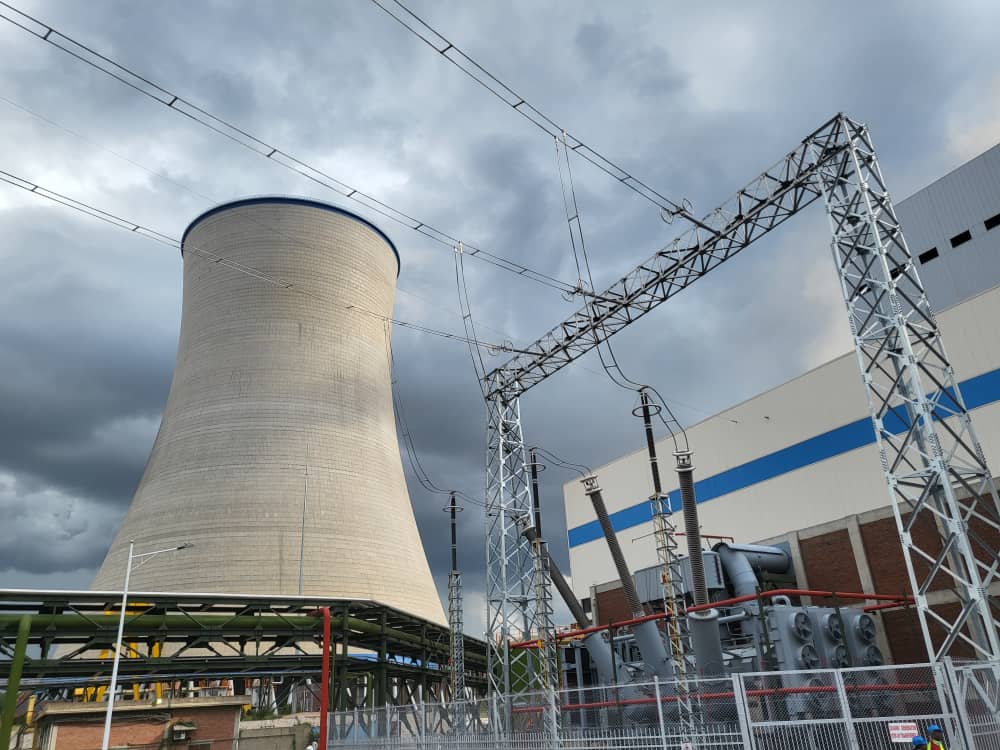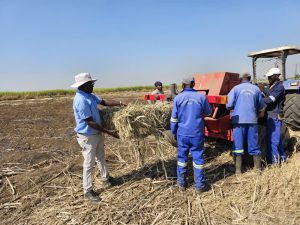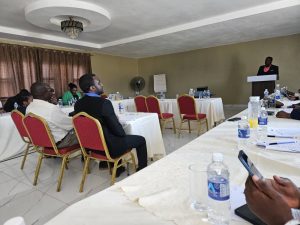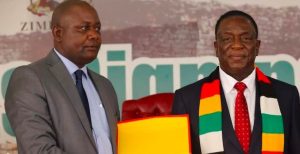….cites needs for a just energy transition
Moses Ziyambi
Zimbabwe has pledged a 40 percent reduction in carbon emissions by year 2030 as part of its Nationally Determined Contributions (NDCs) framework formulated at COP26 but there seem to be neither sincere will nor sufficient capacity to transition to cleaner forms of energy.
On March 2023, authorities announced that Hwange Thermal Power Station Unit 7 had been successfully synchronised with the national power grid.
“Power will be progressively fed into the grid until it reaches 300 megawatts,” the state-controlled Zimbabwe Power Company (ZPC) said in a statement.
Unit 7 (pictured) and Unit 8 are being developed by Chinese company Sinohydro, with the aim of adding 600 megawatss to the national grid when both of them become operational by the end of this year.
Expansion of the coal-fired power station comes in the backdrop of severe power shortages which have seen the country generating less than half of its 1 700 megawatts of daily energy requirements, leading to severe load shedding lasting for up to 17 hours a day.
The expansion is also accompanied by the opening up of new coal fields by Chnese companies in Hwange and in the Dinde are of the neighbouring district of Binga along the banks of the Zambezi River, a situation which seems to fly in the face of national goals to promote cleaner energy as articulated in the national Development Strategy (NDS) 1 document.
In the run-up to COP 27 last year, the Minister of Environment, Climate and Tourism Industry Mangaliso Ndlovu warned that Zimbabwe supported a just energy transition and would not be stampeded into abandoning coal by rich countries which developed on coal themselves.
“There is so much coal to the southern banks of the Zambezi River that we could generate 10 000 megawatts of power if enough investment is mobilized. Our position, however, is that developed countries have a responsibility to support our transition goals so that we are able to meet our carbon reduction targets,” Ndlovu said.
“Whilst Zimbabwe is joining the rest of the world in cutting its emissions, it is well-aware of the impacts of the global actions such as the phase-out of coal-fired power stations on its economy. The country calls for a gradual phase-out that takes into consideration our levels of economic development, the need to reduce energy poverty and time for communities and economic systems to adjust,” he said.
The announcement that Unit 7 of Hwange Thermal Power Station was now online came hot on the heels of yet another comical turn to the story behind the long-delayed 100 megawatt Gwanda Solar Project.
The solar power project contract was awarded to Intratek Zimbabwe, a company owned by controversial businessman Wicknell Chivayo back in 2015, but no work was done despite ZPC paying over US$5 million upfront.
What followed over the years was a drawn-out lawsuit after ZPC withdraw the contract, culminating in the High Court acquitting Chivayo of any wrongdoing and declaring that the tender still subsisted.
Chivayo and his company were on 13 March acquitted of misappropriating the US$5.6 million and abandoning the project.
Chivayo has now publicly voiced commitments to resume the project, but there is less enthusiasm especially with widespread perceptions that rich people with good connections to the national leadership always get away with anything.
“Intratrek is offering an immediate solution to finance the first phase of the project of 10MW using its internal resources. This bridge-financing proposal has been presented to the relevant authorities and is receiving urgent consideration,” Chivayo told the media after his acquittal.
“We will, however, require certain guarantees on repayment of this bridge finance framework, especially considering that the loan to the utility will be in United States dollars.
“It only makes sense for the securities to guarantee repayment in US dollars. Once this has been finalised and all security for payment agreements have been signed, Intratrek is prepared to immediately finance the first phase of 10 megawatts within a period of six months,” Chivayo said.






